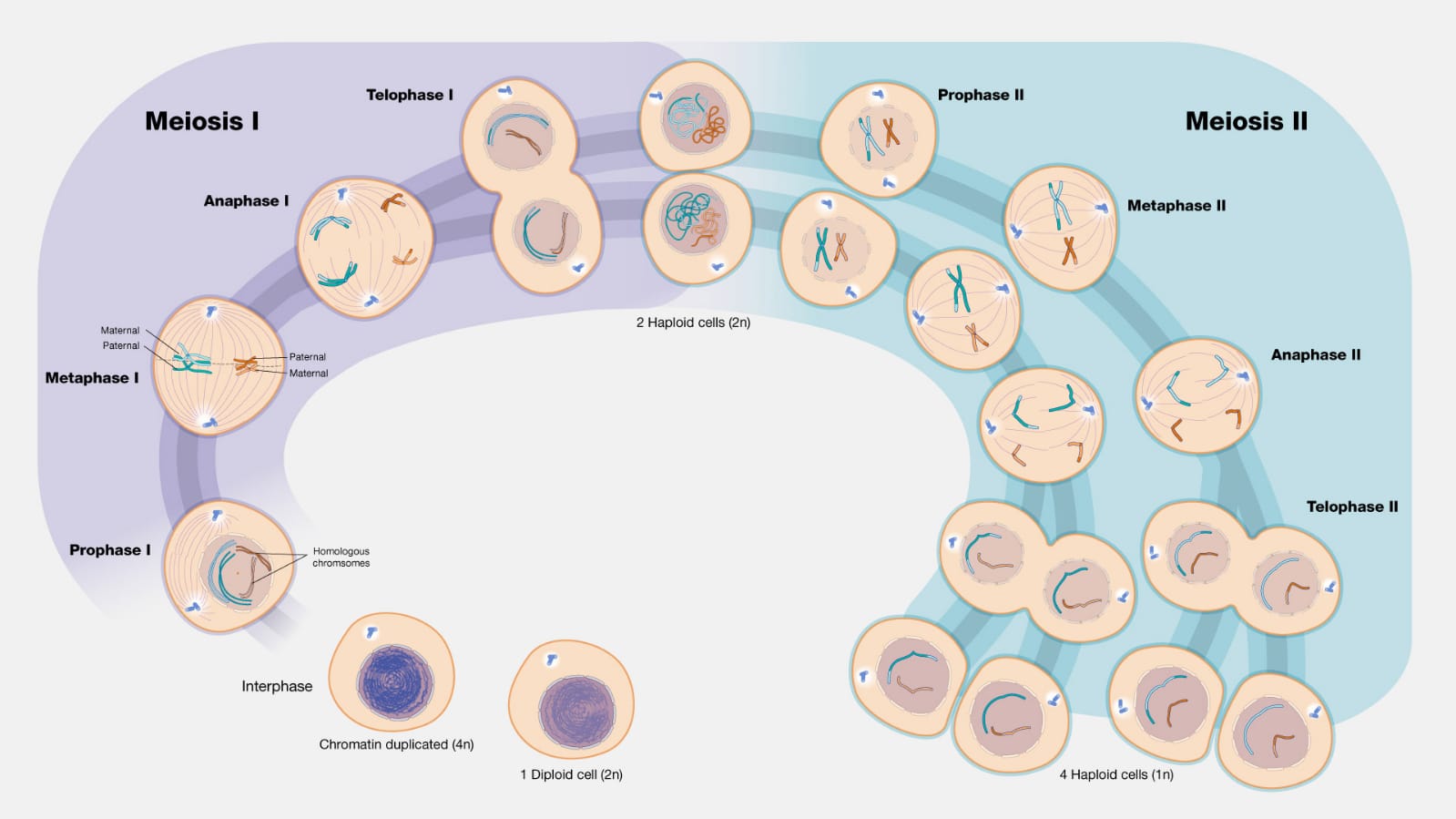MCQ ON MEIOSIS class 12 for NEET | MEIOSIS class 12 | MCQ MEIOSIS with Answer | Check the below NCERT MCQ question for class 12 Biology based on the with Answers.

MCQ ON MEIOSIS class 12 for NEET
MCQ on MEIOSIS class 12 Biology with answers were prepared based on the latest pattern.We have provided class 12 Biology MCQs question with Answers to help students understand the concept very well.
MCQ ON MEIOSIS is useful for NEET / CSIR / UGC / CBSE / ICSE / AIIMS / EXAM / AFMC EXAM / STATE LEVEL MEDICAL EXAM 2022-23 , 2023-24
INTRODUCTION:-
Meiosis occurs only once in the life cycle.The cells undergoing meiosis are called meiocytes.
Meiosis is a double division in which a diploid cell divide twice to form four haploid cells.Interphase is single so that DNA or chromosome replication occurs once.I
It changes single stranded or monad chromosome into double stranded chromosome. Meiosis can be gametic ( occurring at the time of gamete formation e.g. animals),
zygotic (occurring at the time of zygote or zygospore germination e.g. ulothrix, spirogyra, chlamydomonas) and sporic ( at the time of microspore and megaspore formation , e.g. most plants comprising bryophytes, pteridophytes , gymnosperms and angiosperms ) .
Meosis is studied in anthers of unopened flowers / buds and testes of grasshopper.
Interphase is a stage prior to karyokinesis .Interphase has three phases – G1 , S and G2 . Chromosomes replicate during S – phase except for small parts.
Size of nucleus increases to about 3 times.Centrosome replicate in G2 phase which is short .M – phase has two steps or divisions , meosis I and meosis II.The essential processes that occur in meosis are :-
Two successive divisions without replication of DNA in the period of interkinesis.
Crossing over and chiasma formation
Segregation of sister chromatids.
MCQ ON MEIOSIS class 12 for NEET
1. The stage in which chiasmata can be seen in
(a) leptotene
(b) zygotene
(c) pachytene
(d) diakinesis
Ans (d) diakinesis
2. Kinetochore is
(a) granule within centromere
(b) surface of centromere
(c) constriction near chromosome end
(d) end of chromosome
Ans. (b) surface of centromere
3. During meiosis , replication of chromosome occurs in
(a) S-phase
(b) S- phase and zygotene
(c) S- phase and leptotene
(d) All the above
Ans. (b) S- phase and zygotene
4.In meiosis disjunction of chromosomes occur during
(a) metaphase I
(b) anaphase I
(c) metaphase II
(d) Anaphase II
Ans.(b) Anaphase I
5. Chromosome number is restored by
(a) meiosis
(b) mitosis
(c) crossing over
(d) Interphase
Ans.(a) meiosis
6. Non- sister chromatids exchange segments during
(a) leptotene
(b) diplotene
(c) zygotene
(d) pachytene
Ans.(d) pachytene
7. In meosis , synapsis occurs during
(a) Interphase
(b) prophase
(c) cytokinesis
(d) interkinesis
Ans.(b) Prophase
8. Astral rays arise from
(a) centriole
(b) cytoplasm
(c) chromatids
(d) centromere
Ans.(a) centriole
9. Crossing over requires an enzyme
(a) recombinase
(b) ligase
(c) polymerase
(d) endonuclease
Ans. (a) recombinase
10. Chromosome appear beaded during
(a) pachytene
(b) leptotene
(c) diakinesis
(d) diplotene
Ans. (b) leptotene
11. During meosis I , the number of chromosomes is
(a) doubled
(b) tripled
(c) quadrupled
(d) halved
Ans.(d) halved
12. Synapsis occurs between
(a) spindle fibre and centromeres
(b) mRNA and ribosomes
(c) A male and female gamete
(d) two homologous chromosomes
Ans . (d) two homologous chromosomes
13. Which is synthesized in G1- phase ?
(a) DNA polymerase
(b) Histones
(c) nucleolar DNA
(d) Tubulin proteins
Ans.(a) DNA polymerase
14. Which type of coiling occurs in chromosomes?
(a) plectonemic
(b) paranemic
(c) orthostichous
(d) anorthospiral
Ans. (a) plectonemic
15. Astral rays arise from
(a) centriole
(b) cytoplasm
(c) chromatid
(d) centromere
Ans.(a) centriole
ALSO READ:-
● YOU CAN WATCH BIOLOGY SIR Youtube channel
16.In synopsis , two homologous chromosomes are connected at
(a) centromeres
(b) chromosomes
(c) chromomeres
(d) none of the above
Ans.(c) chromomeres







Leave a Comment